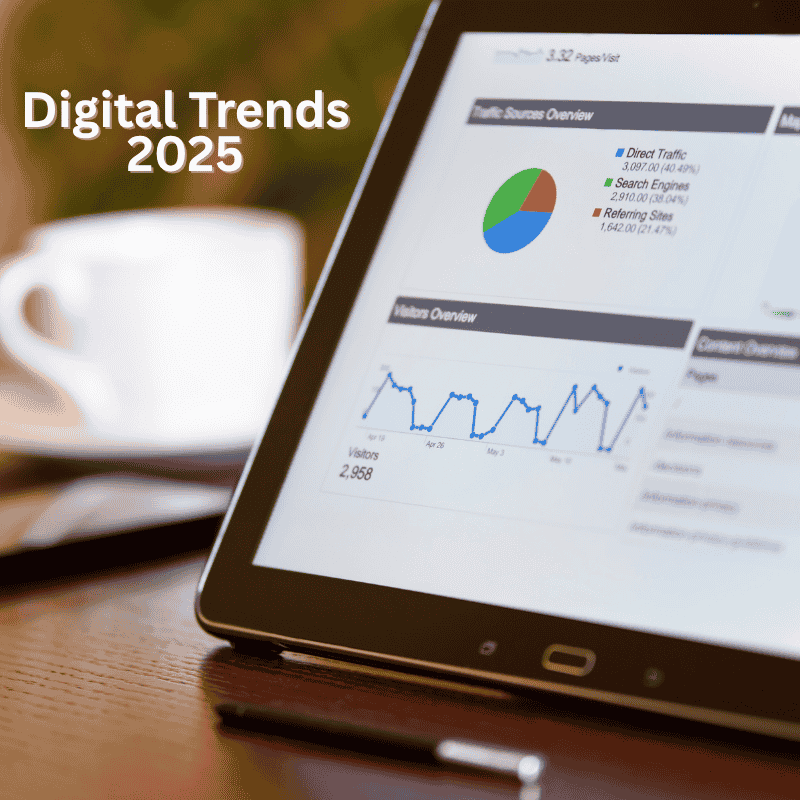The way we search for information online is changing faster than ever. In the past, typing into a search bar was the default method. Today, voice and visual search are transforming how people discover content, products, and services. These innovations are not just convenient—they are becoming central to the way users interact with the digital world. Among the many digital trends 2025, voice and visual search are some of the most significant, shaping everything from search engine optimization to user experience design.
Voice Search: Speaking Instead of Typing
Voice search is one of the fastest-growing methods of online search. With smart assistants like Google Assistant, Siri, and Alexa, people can ask questions naturally, without thinking about keywords. Instead of typing “best restaurants near me,” users simply say, “Which restaurant is open near me right now?”
The implications of this shift are huge for businesses and content creators. Content optimized for voice search must answer questions clearly and conversationally. Long-tail keywords are no longer optional—they are essential. For example, FAQ pages, tutorials, and step-by-step guides now serve a dual purpose: providing information to humans and optimizing for voice search algorithms.
By 2025, voice search will be a standard expectation. Users will increasingly rely on speaking rather than typing, making it essential for websites to adapt. From local businesses to global brands, anyone wanting to stay relevant in the online space must consider voice search as a priority among digital trends 2025.
Visual Search: Discovering Through Images
Visual search is another game-changer in how users interact with the internet. With tools like Google Lens, Pinterest Lens, and smartphone camera integrations, people can search using images instead of text. Want to know where a product is sold, or how to replicate a design you saw? Simply snap a photo, and the AI will analyze the image and provide relevant results.
This shift has broad implications. High-quality visuals are now crucial, not optional. Businesses that invest in clear, accurate, and engaging images will be rewarded with better visibility. Visual search also enhances mobile usability—people can find what they need faster, without typing long descriptions.
For marketers and content creators, visual search is a signal that SEO strategies must expand beyond text. Optimizing images, adding descriptive alt text, and ensuring mobile responsiveness will be critical. Visual search is not just a convenience; it’s a core part of the future of digital life.
Combining Voice and Visual Search
The real power comes when voice and visual search work together. Imagine taking a photo of a product and asking your assistant where to buy it at the best price. Or capturing an image of a landmark while asking questions about its history. These hybrid experiences are already being explored by tech companies and are expected to grow by 2025.
This combination changes user expectations. Speed, convenience, and accuracy become standard, raising the bar for digital experiences. Platforms and brands that fail to adapt risk losing relevance, while those that embrace these technologies can create seamless, intelligent, and personalized experiences for users.
Business and SEO Implications
From a business perspective, integrating voice and visual search strategies is no longer optional. Content creators need to focus on conversational keywords for voice search, while optimizing images for visual search. Structured data, schema markup, and mobile-friendly designs enhance the chances of appearing in both voice and visual search results.
Local businesses can benefit immensely. For instance, voice search makes it easier for potential customers to find nearby services, while visual search can drive product discovery. In this sense, adapting to these trends isn’t just about technology—it’s about staying connected with the audience in meaningful ways.
Preparing for the Future
As voice and visual search become more mainstream, users will expect faster, smarter, and more intuitive experiences. Websites, apps, and content strategies must evolve accordingly. Monitoring analytics, understanding user behavior, and adopting AI-powered tools will be key to staying competitive.
The rise of these technologies also emphasizes the importance of trust and accuracy. Users rely on these searches to make decisions quickly, so providing clear, honest, and relevant information is critical. Brands that prioritize user experience and accessibility will be at an advantage in the growing landscape of digital trends 2025.
Conclusion
Voice and visual search are transforming the way we interact with the online world. They are no longer optional features—they are core expectations of modern users. Businesses, content creators, and digital strategists must adapt to these changes to stay relevant.
Among all digital trends 2025, the growth of voice and visual search stands out as a game-changer, shaping SEO practices, user experience, and the overall approach to digital engagement. Those who embrace these technologies early will not only enhance convenience for users but also gain a competitive edge in the evolving digital landscape.
By preparing for this future, understanding user behavior, and optimizing content accordingly, individuals and organizations can thrive in the era of intelligent, image- and voice-driven search.

